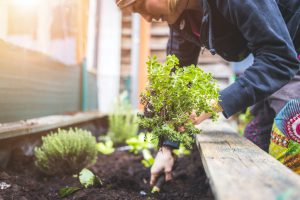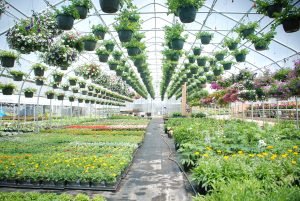Creating a beautiful and thriving landscape requires careful consideration and planning. One of the key elements in designing an appealing outdoor space is selecting the right plants. The plants you choose will determine the overall aesthetic appeal, functionality, and maintenance requirements of your landscape. To ensure success, it is essential to consider several factors before making your final plant selections. In this article, we will explore the key factors to consider when choosing plants for your landscape.
Climate And Hardiness Zone:
One of the most critical factors to consider is the climate and hardiness zone of your area. Different plants have specific temperature and climate requirements for optimal growth. Understanding your region’s hardiness zone will help you identify plants that are suitable for your area. Consider the average temperature range, rainfall patterns, and length of the growing season when selecting plants. This information will ensure that your plants can withstand the environmental conditions in your region, increasing their chances of thriving. When planning a landscaping project in San Jose, understanding the climate and hardiness zone of the area is crucial for selecting the right plants and ensuring their successful growth and survival. Contact Opulandscape to discuss your landscaping San Jose project and start transforming your outdoor space into a beautiful and sustainable landscape that thrives in the San Jose climate.
Sunlight Requirements:
The amount of sunlight your landscape receives throughout the day is another essential factor to consider. Some plants thrive in full sunlight, while others prefer partial shade or complete shade. Observe the sun exposure in different areas of your landscape and choose plants accordingly. Take note of areas with direct sunlight, dappled shade, or deep shade, and select plants that match those conditions. Proper placement based on sunlight requirements will promote healthy growth and prevent the risk of sunburn or inadequate light for your plants.
Soil Type And Drainage:
The soil composition and drainage of your landscape play a crucial role in the success of your plantings. Some plants prefer well-draining soil, while others can tolerate wet or clayey soil. Conduct a soil test to determine the pH level, nutrient content, and texture of your soil. This information will help you select plants that are compatible with your soil type. Additionally, assess the drainage patterns in your landscape to ensure that water doesn’t pool around the plant’s roots, as excessive moisture can lead to root rot and other issues.
Watering And Maintenance:
Consider your willingness and ability to maintain and water the plants regularly. Some plants require frequent watering, while others are more drought-tolerant. If you have a busy lifestyle or limited access to water, opt for low-maintenance plants that can survive with minimal care. Native plants are often a good choice as they are adapted to the local climate and require less water and maintenance once established.
Purpose And Functionality:
Determine the purpose and functionality you want your landscape to serve. Are you looking for privacy, shade, erosion control, or attracting wildlife? Different plants serve different purposes. For example, tall shrubs or trees can provide privacy, while groundcovers can help control erosion. Understanding the desired functionality of your landscape will help you choose plants that fulfill those specific needs.
Aesthetic Appeal And Design:
Lastly, consider the aesthetic appeal and design aspects of your landscape. Think about the color palette, texture, and form of the plants. Choose a combination of plants that complement each other and create a visually pleasing composition. Consider the overall style and theme you want to achieve, whether it’s a formal garden, cottage garden, or a modern minimalist design. When looking to enhance the aesthetics of your landscape, it is beneficial to collaborate with a skilled landscaping contractor such as a Burlingame landscaping contractor. Properly planned and arranged plants can enhance the beauty of your landscape and create a cohesive look.
Plant Compatibility:
Consider the compatibility of plants when selecting them for your landscape. Some plants have specific companion or antagonistic relationships with other species. Research and choose plants that thrive well together, promoting mutual growth and health. Certain plants may also repel pests or attract beneficial insects, which can contribute to a healthier and more balanced ecosystem within your landscape.
Growth Characteristics:
Take into account the growth characteristics of the plants you are considering. Some plants may have invasive root systems that can damage structures or compete with other plants for resources. Consider the mature size of the plants and ensure they have adequate space to grow without overcrowding or overshadowing other plants. Understanding the growth habits of your chosen plants will help you plan and maintain a harmonious landscape.
Seasonal Interest:
Think about the seasonal interest your landscape will provide throughout the year. Select plants that offer different colors, textures, or blooming periods during different seasons. This will ensure that your landscape remains visually appealing and vibrant throughout the year, rather than looking dull or bare during certain months. Consider incorporating a mix of evergreen plants, flowering shrubs, and perennials to create a dynamic and visually pleasing landscape.
Conclusion
In conclusion, selecting the right plants for your landscape involves a thoughtful and informed approach. By considering factors such as climate, sunlight requirements, soil type, water needs, functionality, aesthetic appeal, plant compatibility, growth characteristics, seasonal interest, and environmental considerations, you can create a landscape that is not only visually appealing but also sustainable and well-suited to its surroundings. Take the time to research and consult with experts to make informed choices, ensuring the long-term success and enjoyment of your landscape. Remember, choosing the right plants is an investment in creating a beautiful and thriving outdoor space. Happy gardening!
ALSO READ / how to maintain a greenhouse






Be First to Comment